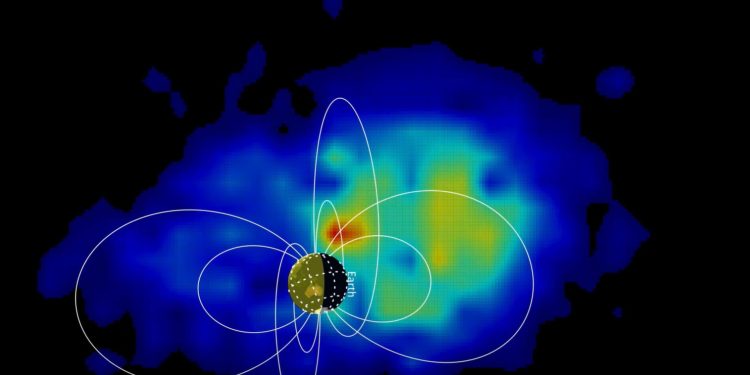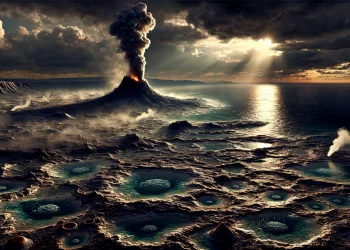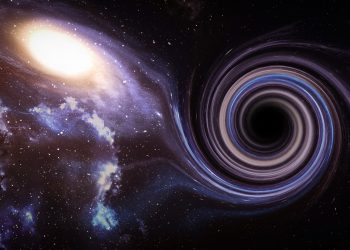NASA has unveiled the clearest images ever of Earth’s radiation belt, thanks to a spacecraft that wasn’t even primarily designed for this purpose. The Jupiter Icy Moons Explorer (JUICE), a space probe on its way to Jupiter, provided these groundbreaking images while making use of Earth’s magnetic field during its journey. Although its ultimate destination is the largest planet in our Solar System, JUICE has already started delivering invaluable scientific data.
JUICE’s Mission to Jupiter
Launched on April 14, 2023, by the European Space Agency, JUICE is set to arrive at Jupiter in July 2031. Its primary mission will focus on studying the gas giant’s magnetosphere and exploring three of its most intriguing moons: Callisto, Europa, and Ganymede. These moons are of particular interest due to their potential to harbor life beneath icy surfaces.
However, the journey to Jupiter is no simple straight-line trip. JUICE must perform a series of gravitational slingshots around various planets to gain speed and adjust its trajectory. On August 19, JUICE had its first major close encounter—one that not only fine-tuned its path but also provided a unique opportunity for scientific exploration.
The Flyby That Delivered Groundbreaking Insights
As JUICE passed just 465 miles above the lunar surface, one of its onboard instruments, the Jovian Energetic Electrons (JoEE) tool, gathered critical data about the space environment around the moon. This brief 30-minute window allowed scientists to observe how the moon interacts with Earth’s magnetosphere, laying the groundwork for what JoEE will later accomplish when JUICE reaches Jupiter.
But that wasn’t all. On August 20, JUICE made another critical pass through Earth’s magnetosphere, roughly 37,000 miles above the Pacific Ocean. During this phase, another onboard instrument—the Jovian Energetic Neutrals and Ions (JENI)—captured a wealth of data. Using highly sensitive camera sensors, JENI recorded the energized neutral atoms that form when charged particles collide with Earth’s atmospheric hydrogen gas. The result? The most detailed images ever recorded of Earth’s radiation belt.
A New Understanding of Earth’s Magnetosphere
Pontus Brandt, the principal investigator for both JoEE and JENI from the Johns Hopkins Applied Physics Laboratory, expressed excitement over the data collected. “I couldn’t have hoped for a better flyby,” he noted. “JENI’s image of the entire system we flew through was the cherry on top. It’s a powerful combination we will exploit in the Jovian system.”
The Van Allen radiation belt, a region of charged particles surrounding Earth, poses significant challenges for space exploration. While inanimate objects like space probes can withstand these million-degree plasma clouds, human missions to the moon or Mars must account for the potential risks involved. The data gathered by JUICE’s instruments will play a critical role in shaping future space travel, particularly in understanding how radiation impacts both spacecraft and astronauts.
What Lies Ahead for JUICE
JUICE’s journey is far from over. In August 2025, the spacecraft will make another close encounter, this time with Venus. This gravitational maneuver will further refine its path before returning to Earth for additional flybys in 2026 and 2029. After these gravity assists, JUICE will finally set its course for Jupiter, where it will begin its primary mission of exploring the planet’s magnetosphere and its moons.
While JUICE’s ultimate goal is to unlock the secrets of Jupiter, it’s already proving to be an invaluable asset for understanding Earth’s space environment. By providing the clearest images yet of Earth’s radiation belt, the probe has set the stage for even greater discoveries once it reaches its final destination.











